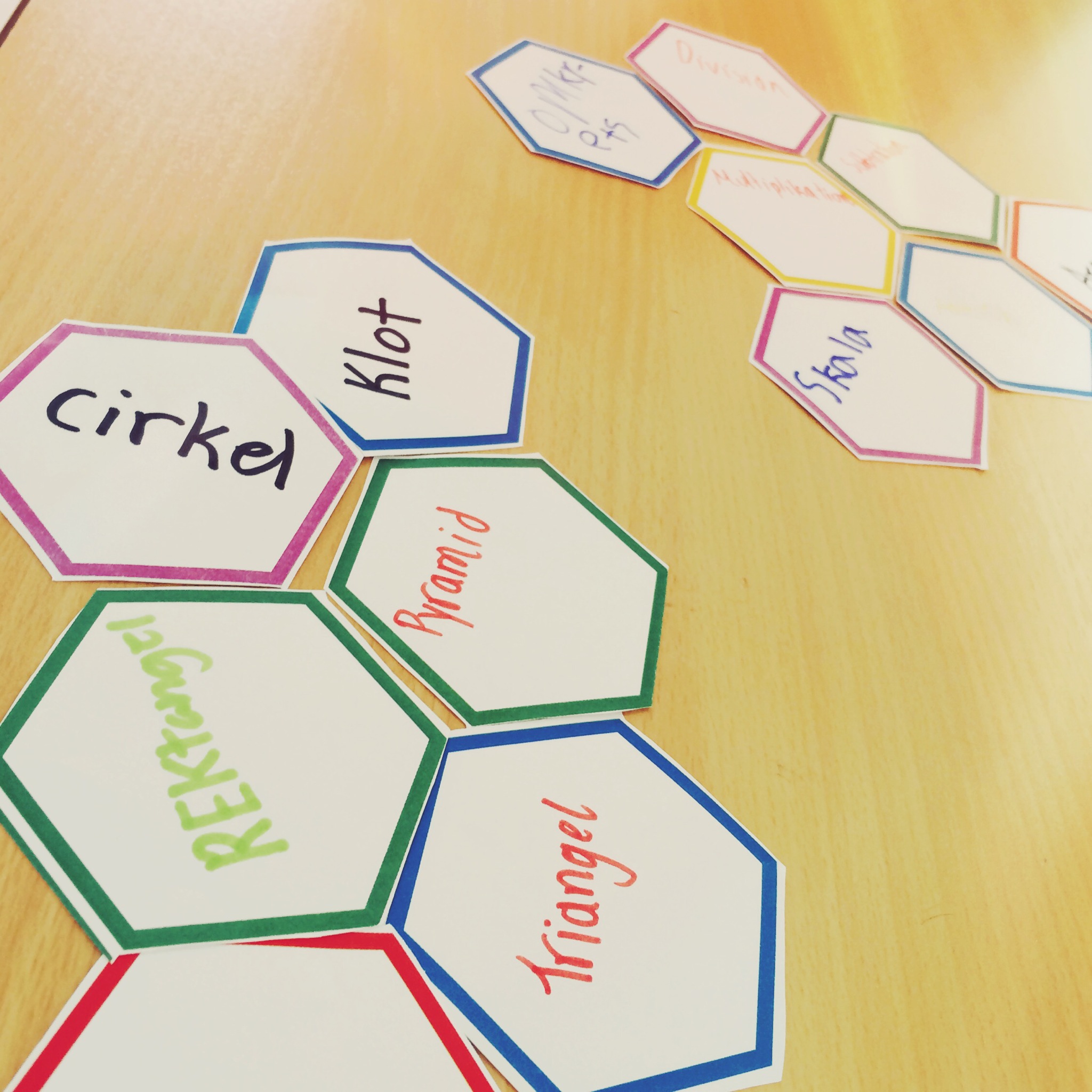In January of 2014 I and a colleague got the opportunity to visit the annual BETT conference in London, England. This is the biggest conference in Europe dedicated to ICT and modern learning. As part of that experience we participated in a workshop about the future of learning hosted by Johan Unosson and Per Falk at lin education. At one point in that workshop they presented us with a task based upon the model of Hexagonal Thinking.
The workshop itself and the natural creativity of the model stuck with me and in hindsight became one of the top 5 most valuable experiences of our BETT trip this year. I’ve used the model in various contexts ever since, solely on adults. So this week, when I was planning the first hands on workshop on mathematics for the school year I decided to take it one step further and try it on my students.
Now this might be a good time for a brief introduction of me and my pedagogical context. I work as a primary school teacher in the small community of Jonsered outside of Göteborg, Sweden. With a thousand or so citizens and more or less all the buildings dating back to the 1830s (and since long preserved by a long list of national conservation laws) the local history is ever present in Jonsered. Some of our students are the seventh generation to attend our school. In the same time we were amongst the first primary schools in Sweden with a fully developed program for giving one laptop/iPad per student and has since 2009 been devoted to implementing new ways of achieving the learning goals specified in our national curriculum LGR 11. We have all in all about 200 students and 20 teachers where I am in charge of teaching maths to our oldest students (aged 10 and 11).
So it’s the beginning of the year and the first hands on workshops since the summer break. Normally we would be to teachers and groups of 15-20 students in four consecutive groups. We are in the midst of starting a project about mathematical terminology and other communication skills related to math. I want to spend the first lesson my students preconceived ideas and what they already know. That’s why I decided to go with the model Hexagonal Thinking.
I adapted the model to younger students by placing them in three groups of 5-6 students per group and by simplifying the three steps of the model.
Step 1. Writing the hexagons
I prepared a 20 paper hexagons in order to make this part kind of short. The objective is to write one word connected to maths on each piece of paper. I suggested to the students to co-ordinate within the group in order to avoid duplicates. They were very keen to do this since the number of available hexagons was clearly limited. This part of the activity demands the participation of the entire group.
Step 2. Sorting out a pattern
The really interesting part for me as a teacher trying to understand what my students know about mathematical terminology is to see how they connect different terms and concepts. That’s what I had them do in this part of the activity. I asked them to select one student within the group to make a pattern of choice where similar words are closer to each other and words that aren’t similar are further apart.
The students immediately asked about the shape of the pattern so the second time I introduced the activity I made a point of explaining that it might be a long line, or a number of islands or whatever pattern they could imagine. The main objective is to gather words that are similar. In some groups the students decided by themselves to make it two students in charge of sorting. I let that slide in the name of always encouraging my students to think by themselves and solve problems collectivly.
Step 3. Reaching group consensus.
Once the one selected student is finished sorting out the hexagons and is fairly content with the pattern the group transcends to step three, where the objective is to reach a group consensus. I made a point of explaining to the students that they by know have on group members unfiltered idea of how mathematical terminology is structured – and that is something very interesting in itself. But it isn’t representative for the entire group. That is why we need the rest of the group to get involved by asking questions of why certain hexagons are close to each other or by suggesting changes that could make the pattern even better.
In advance I expected this step to be somewhat of a problem for at least one or two of the groups since critiquing the pattern might be perceived as critiquing the group member. That was, surprisingly enough, never the case.
After doing this activity with four different groups and slightly altering the framework between each time I’m very satisfied with both with the reaction from the students and for how well the activity delivered the collaborative and explorative environment that I want to establish in my classroom for the upcoming year.


Kommentera